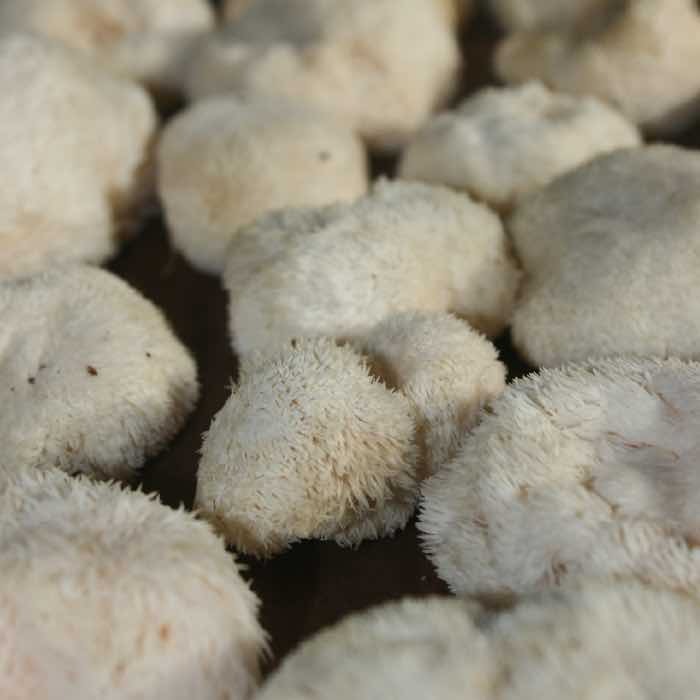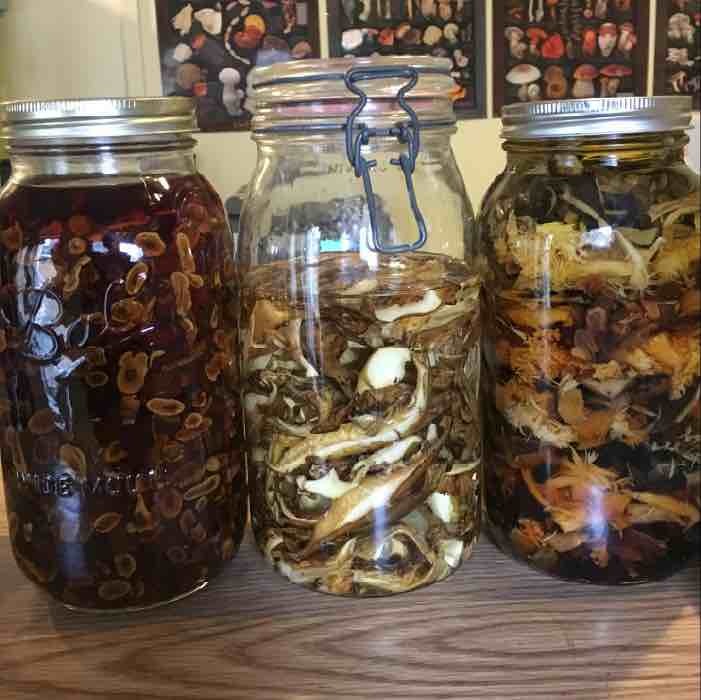Watching a mushroom grow from a tiny pin into a brilliant fruiting body is a process that most people will never experience. The fungi that inhabit this world are often overlooked and taken for granted.

After harvesting, many experiences can come from a mushroom. Perhaps it is being packaged and sold wholesale, put into a till and sold directly to an eager customer, sautéed, roasted or grilled and enjoyed by you and your family, brewed into a delightful tea or even tinctured: an exciting transformation all on its own! Tincturing is not a difficult process and the result is worth the wait. Mushrooms, when combined with alcohol, release vibrantly warm colors, each day darkening and watching the color flow brings delight to the maker. On average the whole process takes about six weeks, even longer if you are growing your own mushrooms (which makes the process even more satisfying).
Making a mushroom tincture is a great way to extract the beneficial compounds from mushrooms. Whether you're using fresh or dried mushrooms, the process is fairly straightforward. Here's a step-by-step guide:
Ingredients and Supplies
- Mushrooms: Fresh or dried (e.g., reishi, lion's mane, shiitake, etc.)
- Alcohol: High-proof, food-grade alcohol like vodka or Everclear (80-100 proof). Alcohol is essential for extraction.
- Clear Glass jar: For soaking the mushrooms.
- Strainer or cheesecloth: For straining the tincture.
- Dark glass bottles: For storing the finished tincture.
- Labels: To mark the tincture for future reference.
Preparation
- Choose Your Mushrooms: You can tincture any mushrooms, but the most popular ones we find people tincturing are Lion's Mane, Shiitake, Reishi, Turkey Tail, and Chaga.
- Fresh Mushrooms: Ensure they are clean and free of any contaminants. Chop them into small pieces.
- Dried Mushrooms: Ensure they are completely dried and broken into small pieces or ground into a coarse powder if possible.
- Prepare the Alcohol
- Alcohol Ratio: Typically, a 1:5 or 1:4 ratio of mushroom to alcohol is used. For instance, if you have 1 cup of chopped mushrooms, you'll need about 4-5 cups of alcohol.
- Combine Mushrooms and Alcohol
- Place the chopped fresh mushrooms or dried mushroom pieces/powder into a clean glass jar.
- Pour the alcohol over the mushrooms, ensuring they are fully submersed. Leave some space at the top of the jar to allow for expansion.
- Seal and Store
- Seal the jar tightly with a lid.
- Store the jar in a cool, dark place. Shake it gently once a day to help with the extraction process.
- Let It Infuse
- Infusion Time: For fresh mushrooms, let it infuse for at least 2-4 weeks. For dried mushrooms, you might go for 4-6 weeks. The longer you let it sit, the stronger the tincture will be.
- Strain the Tincture
- After the infusion period, strain the mixture through a fine strainer or cheesecloth into a clean bowl or another jar. Make sure to press out as much liquid as possible from the mushroom solids.
- Bottle the Tincture
- Pour the strained tincture into dark glass bottles. These help protect the tincture from light, which can degrade the tincture quality over time.
- Label and Store
- Label the bottles with the date and type of mushroom used.
- Store the tincture in a cool, dark place. Properly stored, tinctures can last for several years.
Dosage and Usage
- Dosage: Tinctures are usually taken in small amounts. A common starting dose is 1-2 dropperfuls (about 1-2 ml) a few times a day, but it's best to start small and adjust according to your needs and any guidance from a healthcare professional.
- Usage: You can take tinctures directly or mix them into your beverage of choice!
Feel free to adjust the process based on the specific type of mushroom and your personal preferences. Enjoy your homemade tincture!
Want to grow your own medicinal mushrooms?
Our Health Nut Table Top Farm set is a great place to start! This includes on Table Top Farm each of Shiitake, Lion's Mane, and Reishi - the three powerhouses!


